#feature story
Explore tagged Tumblr posts
Text
The Toreador March isn’t actually supposed to ever be played during a normal day at Freddy Fazbear’s Pizza.
According to engineer Henry Emily, it’s a dummy file in Freddy’s coding, used for testing his audio devices. It runs upon boot so employees know there’s no issues with Freddy’s music box.
This, however, has resulted in a few unsettling situations. In the event of a power outage or surge, the jolly Freddy immediately stops singing, takes on an empty, neutral expression, and begins playing the dummy file. Because of the sudden tone shift, children may be frightened.
#oof owie#newsposting#feature story#fnaf#five nights at freddy's#freddy fazbear#headcanon#fnaf headcanons
7 notes
·
View notes
Text
What is dark academia and what does it have to do with social media?
A deep dive into the genre and why it has become so popular.
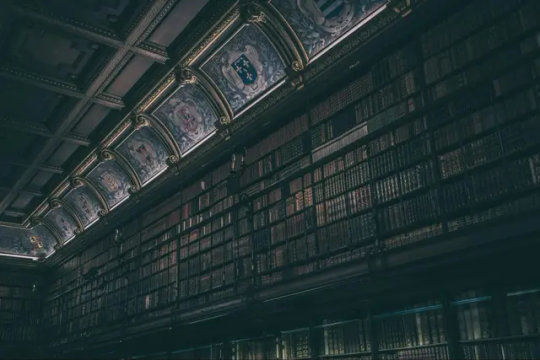
Dark academia has recently been seeing a growth in popularity across social media, with its aesthetic being displayed in movies, television shows, and primarily novels.
The year 2020 marked some significant changes in our media landscape. That may seem like a bit of a nonpoint, but the rise of TikTok coupled with the number of people inside due to pandemic restrictions saw an irreversible change within popular trends and aesthetics.
In the literature community, one such trend was the rise of dark academia. Though the subculture primarily exists online, the term is slowly creeping into the mainstream. In 2022, it was defined by Collins Dictionary as “a social media aesthetic and subculture concerned with higher education, writing and poetry, the arts, and classic Greek and Gothic architecture,” which is somewhat of a broad interpretation. To uncover what makes dark academia such an appealing genre today, one needs to trace back its history; starting with, perhaps most famously, The Secret History by Donna Tartt.
Published in 1992, the novel is what some point to as the first dark academic novel. A pioneer of its time, it is still quite relevant today — it can almost always be counted on to be present on #BookTok recommends tables at bookstores. Set at a fictional college in New England, the novel follows a group of students studying ancient Greek. The narrator, a student who joined the group after its initial formation, unveils how one of them was murdered by the group’s original members. As far as dark academia goes, it’s got it all — murder, Greek aesthetics, a fancy, secluded college. Unsurprisingly, many elements of Tartt’s magnum opus can be found in other books within the genre.
One of the first notable pillars of the genre is right in the name — academia. These novels typically take place in an academic setting; whether this is at a private boarding school or around a college campus. Still, dark academia wouldn’t exactly be academia without some form of academics. Typically, these characters are often studying Ancient Greek, Shakespearean theatre, or English literature — fields that are, for lack of a better word, pretentious. These topics are absolutely for everyone but are not necessarily accessible things to learn about and interact with, or make a living out of. This does not necessarily mean that if a character is studying one of these topics the novel they are in is a dark academic novel, but a character’s field of study, such as these examples, will often add to the atmosphere of dark academia.
A significant number of these stories see characters marked by tragedy, mystery, or both at the same time. Whether that involves crime (see If We Were Villains by M.L. Rio) or a mystery to solve (see Truly, Devious by Maureen Johnson), the characters are typically caught up in a problem larger than themselves, like solving a murder (or, in the case of The Secret History, getting away with one).
Some authors have utilized the genre and its traits to call out and criticize these academic settings which have been historically open only to white and rich individuals, see Babel by R.F. Kuang.
The novel is set in 1828 in Britain and follows Chinese-born Robin who is forced to give his help to an institution that will only use his work to further their goals of colonization. At school, he and members of his friend group continuously face racism as students of colour. Although Robin is a member of this school community, it is clear that many do not want him there, and he, like many of the other students of colour, are viewed as disposable.
As Lenore Sell puts it in her article Beyond the Aesthetics: An Introduction to Dark Academia, “Some of the novels blame elitist structures at educational institutions for the ensuing destruction, or even a dysfunctional academic landscape as a whole, although this connection is not always the object of overt criticism or satire.”
For example, in The Picture of Dorian Gray by Oscar Wilde, the characters are not directly opposed to their wealth, but Wilde uses them and their lifestyles to highlight the inherent lack of morality present in these structures. This novel is an interesting case as it holds elements of magical realism and gothic literature as well as dark academia, but its traits allow it to somewhat fit into both genres.
As more dark academic books continue to be published, their popularity seems to grow. However, sometimes what its readers are chasing is more of a feeling or an aesthetic than quality literature.
Dark academia is directly linked to an old-fashioned kind of style, with modern technology rarely, if ever, appearing in many of its most famous works. The fashion choices of the characters—such as blazers, woolen sweaters, tweed patterns, and just generally darker colour palettes—all contribute to the finely curated aesthetic of dark rooms, classic novels, candles, and typewriters. Sure, these things are all technically dark academia-inspired, but they do nothing more than just scratch the surface of what the genre purports to actually be about: learning, higher education, and literature.
A genre based purely on its aesthetics and vibes might at first seem to be only superficial and provide no substance. It can, however, encompass an idea or way of life that some crave. Sell writes in her article, “The rise of dark academia can be an expression of the longing of younger generations for a lifestyle temporarily or permanently inaccessible to them.”
This longing could especially be felt by those who are unable to afford post-secondary education, or those typically excluded from higher academic circles. Attending a post-secondary institution comes with a sense of community, particularly for those who live on campus and broaden their experiences by participating in new activities and meeting new friends. These institutions, while being flawed, are incredibly important because of this, as they provide something that many of us want. Following this logic, it’s possible then, that the boom in dark academia’s popularity was a result of people longing for these institutions that were closed during the pandemic or are unavailable to so many people.
Racism and class inequality contribute to the lack of diversity seen in higher academic settings, particularly because of how expensive post-secondary education can be. It’s why turning to social media to fulfill these dreams is easier for many.
Katie Xu (@katiexsocials), a TikToker who posts about building your personal brand and learning how to market yourself, posted a video on TikTok’s ability to foster human connections, stating, “People on TikTok are connecting to people. When I see someone on my For You page, I listen to what they have to say … I’m listening to them as a person, and I’m trying to understand them as a person.”
While she does not make any reference to dark academia, her idea has merit because of the way platforms like TikTok are designed to make sure you interact with people who share the same interests as you. Social media itself is perhaps the largest and most influential community there is, so for individuals to turn to that at times of uncertainty and find solace in a niche like dark academia is reflective of the weight the genre held then and still holds today.
Currently, TikTok has over four hundred thousand posts under its dark academia tag, based on videos about the aesthetic and the books that fall into its category. While the majority of the hype (at least in my opinion) has died down a bit, it is still a genre that is very much relevant outside of social media. For example, outside of the literature community, other mediums have used the dark academic aesthetic to tell stories, such as podcasts like The Alexandria Archives or The Magnus Archives. The aesthetic is also present in TV shows like Wednesday or A Series of Unfortunate Events. It can even branch out into music with a more recent example being Taylor Swift’s THE TORTURED POETS DEPARTMENT.
But to bring it back to literature, one of the most recent books on the scene is Curious Tides, by French-Canadian author Pascale Lacelle.
The novel has all the most familiar trappings of a dark academic book, but with a magical twist in line with stories in the fantasy genre. Set at a fictional college, the protagonist has to investigate the secret society that seems to be connected to her classmates’ mysterious deaths. Only, these deaths of which she is the only survivor have left her with heightened powers. Similar to Babel, this blend of a different genre with dark academia prolongs the genre’s lifespan and takes it to places it has not traditionally been.
Like all other trends, the dark academia one will most likely not have wide-ranging impacts outside of its small niches, but I’m talking purely about its aesthetic sense. In the literary market, it looks like there are still plenty more stories to tell that can deviate from the traditional dark academia novel while still using its most popular elements.
#dark academia#the secret history#babel rf kuang#the picture of dorian gray#gothic literature#aesthetic#class inequality#feature story
5 notes
·
View notes
Text
three hearts that beat as one | old hollywood throuples anyone???
#old hollywood#classic hollywood#my post#my edit#yes yes they are not all throuples there are some that are 4. but you get the point!!!#btw three hearts that beat as one is a legit tagline for design for living#okay okay so lets get into identifying things. song: 3 - britney spears. films in order of appearance:#design for living#design for living 1933#the talk of the town#the talk of the town 1942#the philadelphia story#the philadelphia story 1940#singin in the rain#singin in the rain 1952#too many husbands#too many husbands 1940#fours a crowd#fours a crowd 1938#its love im after#its love im after 1937#my favorite wife#my favorite wife 1940#you can tell the relative throuple-ness roughly by how much they are featured lol. okay now for my OWN sake i must tag some actors#miriam hopkins#jean arthur#cary grant#katharine hepburn#james stewart#olivia de havilland
9K notes
·
View notes
Text


the woman who holds the moon
prints available here. my cover for this month's issue of baffling magazine.
#i can finally share this piece!#this cover was based on a short story called “moon bearer” by celia daniels that features on this issue of the magazine#the character designs are mine#also there's a sale on inprnt again so my prints are cheaper than usual!#illustration#artists on tumblr#illo#lesbian#wlw#sapphic#lesbian art#wlw art#sapphic art#queer art#baffling magazine#blue#moon#night sky#queer fantasy
55K notes
·
View notes
Text
Get Down with Mikey Drag
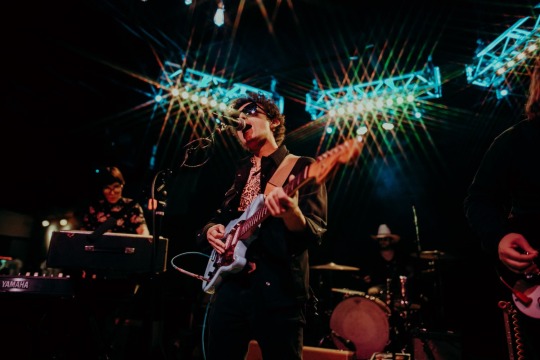
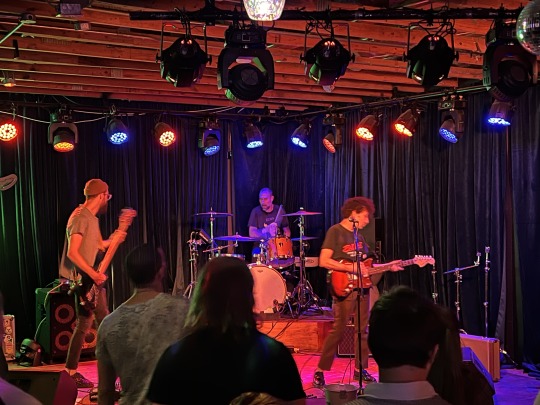
Had a small chat with DJ and musician Mikey Drag over his creative journey. Click here to check it out.
0 notes
Text
feature story outline
For my feature story, I'm choosing to write about the Rockford Park District's hockey division. Specifically, the employees who work for hockey teams and other programs. Many of the supervisors who oversee and even coach hockey teams for the RPD have played hockey in the area, both professionally and in their youth.
My boyfriend currently works for the Rockford Park District. He works at both of the local ice rinks and helps train teams, teaches children to skate, and teaches children the fundamentals of hockey. He always tells me funny stories about the kids, and constantly tells me work is so enjoyable it hardly feels mundane.
He doesn't work alone though, he works alongside friends who he's played hockey with for the majority of his life. They typically work together, sharing their knowledge and love for hockey with young athletes.
What stands out to me most, and will be the focus of my story, is the little hockey family that the Rockford Park District has created. Many of the employees who work at the rinks (through the RPD) have been coached by their supervisors in the past. I'm curious how their supervisors feel working alongside the men they used to coach as young boys. Additionally, I'll be interviewing them about their connectedness with each other and coworkers. I'll ask about the full-circle feeling of teaching boys to play hockey at the same place they were taught to play.
I think this story will be important to not only the Rockford Park District but the entire hockey community that has been built in the Rockford area. Some of these men have continued their hockey careers playing for organizations outside of Rockford, but they still choose to come home and work for the organization they started at.
The focus on community and family that the RPD has brought to people of all ages is heartwarming and sheds light on the good in the city of Rockford.
#hockey#illinois#journalism#reporting#hockey community#blog#rockford illinois#rockford#youth hockey#feature story
0 notes
Text
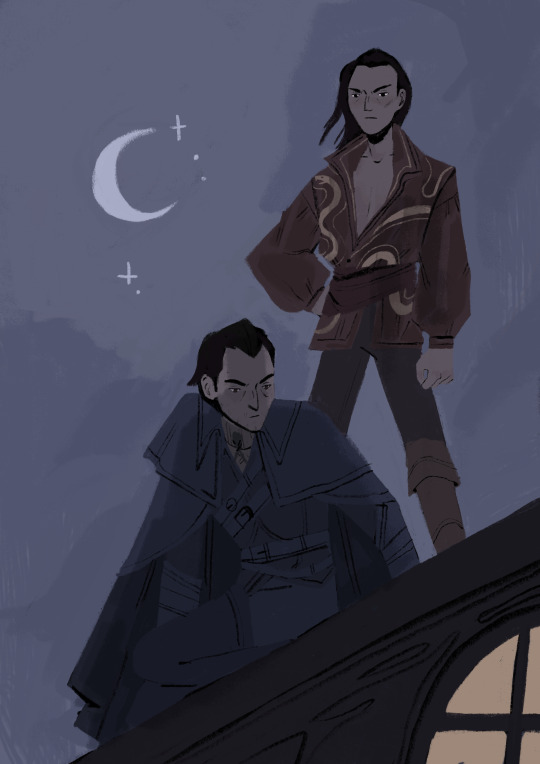
wigmaker job
#dragon age#datv#tevinter nights#lucanis dellamorte#illario dellamorte#that story was fun.... maybe my favorite#i also liked the one featuring evka and antoine but i mean. mostly because it featured evka and antoine#my art#art tag
1K notes
·
View notes
Text
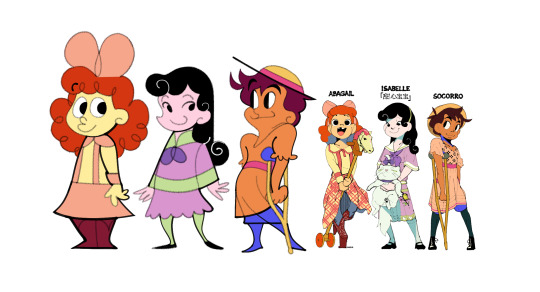
fuck it. hits you with the upa ray gun.
#wip#personal#delete later#i'm gonna draw more explorations of this so wip for now#tulli and i's idea is for the cmc-focused stories they'd be done in a “lower budget” upa art style. as if it's just a quick short film and#the studio's trying to save money for the big feature films
2K notes
·
View notes
Text
It’s time to share with all of you. Beautiful readers, my compassion, international outline story. Let me know if you think I’m on the right track in the comments!
I. Introduction
- Brief overview of Compassion International and its impact on children's lives
- Introduction of the two interviewees: the Compassion International student and the volunteer
II. The Story of the Compassion International Student
- Background information on the student's life in Uganda and how she became involved with Compassion International
- Details on the full ride scholarship and housing she received through Compassion International
- Discussion of the challenges she faced while earning her PhD and adapting to life in the USA
- Reflections on how Compassion International impacted her life and goals for the future
III. The Impact of Compassion International Volunteers
- Introduction of Jan and her role as a volunteer with Compassion International
- Details on the work that Compassion International volunteers do, both domestically and internationally
- Discussion of the impact that volunteers have on the lives of the children and families involved with Compassion International
- Reflections on Jan's experiences volunteering with Compassion International and why it has been important to her
IV. The Importance of Compassion International
- Discussion of the impact that Compassion International has on children's lives, both in the short and long term
- Reflections on why Compassion International is important to the author as a partner and supporter
- Call to action for readers to consider getting involved with Compassion International or supporting its mission
V. Conclusion
- Summary of the importance of Compassion International and the impact it has on individuals and communities
- Final thoughts from the author on the significance of being a partner with Compassion International.
0 notes
Text
My knowledge of superhero comics isn't deep so much as it is frustratingly eclectic. Like, I might well completely fail to recognise a character who's been a regular member of the X-Men for thirty years, but if you need somebody to explain from unprompted memory the complete plot of Spanner's Galaxy, I'm your guy.
#media#comics#superheroes#other areas of expertise include:#'that one cyborg dude whose series ran as a backup feature in marvel comics presents: excalibur for six months in 1989'#and#'the origin story of that trio of sexy demon siblings who show up in like five issues of moon knight in the 90s'
2K notes
·
View notes
Text


favourite moments of bg3 -> (4/?)
#baldurs gate 3#bg3edit#astarion#astarion ancunin#gamingedit#gamediting#dailygaming#he has such soft features when he isnt sulking he also has those doey red eyes#i can see why people fall for him#he is also so cute and when he revealed his story to me my heart broke into a million pieces#and that day i made it my mission to exterminate cazador and pee on his grave#myedit#favebg3edits
495 notes
·
View notes
Text
Is Creativity Dying In Hollywood? Canadians Share Their Takes
A look into originality in the film industry and the growing presence of remakes and adaptations.

In a world becoming increasingly dominated by AI technology that can produce virtually anything from movie scripts to artwork, originality is growing rarer. In one of the latest TikTok trends, people are asking AI to create artwork for them, but ‘make it more,’ and in other experiments, the technology is generating entire movie outlines. The concept of originality is directly connected to the creative industries, and we rely on them for a lot of the content we consume. In particular, the film industry has been fighting a battle for creativity as the Writers Guild of America (WGA) reached a deal for better working conditions, higher pay and protection from the usage of AI on scripts. The protection from AI is essential, as screenwriters do their best to develop original ideas and material—but how original are some of these ideas?
Hollywood is no stranger to the occasional remake or adaptation of a particularly beloved film, but lately, they have been on the rise. According to a report from Radio Times, there has been an increase in the number of sequels and remakes created since 1993, with a 700 per cent increase over the past 25 years. This indicates that there has been more of a reliance on content that audiences are familiar with—whether that is material adapted from books, comics, or even older movies that have been rebooted.
John Tarver, a film professor at Toronto Metropolitan University (TMU), argues that these stories we are so familiar with are relatively all the same at their roots.
“I think a strong case can be made that there is no such thing as an original story idea,” he said during a phone call. “There’s so many things that influence the stories that we want to see, and that filmmakers tell.”
Aisling Chin-Yee, a Canadian producer, writer and director echoes this statement. “There are always original ideas, and there are no original ideas,” she laughs over the phone. For her, originality is important because of the unique and diverse stories that can be inspired by it. “We need to keep reflecting the society and culture of this time. The world we’re living in now is not the same as the world was 15 years ago.”
Being able to retell a familiar story that has an original concept and storyline is what stories like Robyn Hood do. The Canadian show’s premise is based on the old English legend of Robin Hood, an outlaw who steals from the rich to give to the poor. In the TV show, Robyn is a Black woman who, along with her hip-hop band, The Hood, goes up against the property developer trying to tear down the apartment Robyn and her community live in. While certain story elements will be familiar to viewers, and the storyline is the same as the legend at its roots, the TV show presents this story with a new perspective. Arguments can be made that this is what true originality is.
“Worrying about originality is not really helpful,” said Brett Caron, a Canadian screenwriter, during a phone interview. “You just want to focus on telling a good story.”
Stories that come from perspectives other than the highly popularized white, Western idea of filmmaking are slowly but surely climbing their way into what our society views as the standard for films and TV shows. For example, the UCLA Hollywood Diversity Report shows that 64 per cent of films released on streaming services had casts that were made up of 30 per cent minority actors, but only 57 per cent of films released in theatres showed this same diversity. It is a small step for Hollywood in terms of embracing diversity, but a step that solidifies a place for marginalized voices and unique stories.
Robyn Hood shines a light on the experiences of minorities, and how they are forced to live in a world that, at times, doesn’t seem to want them there. In the show, the residents living in Robyn’s apartment building are seen as obstacles for the property developer to remove, instead of actual human beings. This is different from other remakes or adaptations of Robin Hood, as it shows its audience a systemic problem that minorities have been facing for decades. The best thing about stories like Robyn Hood is that they bring awareness to these issues within our society while presenting them in a way that makes it easy for audiences to understand the message producers and directors are trying to convey.
Bea Santos, a Canadian filmmaker and actress, says that the same types of people have been telling the same types of stories for so long, which is why diverse perspectives must get to share their own stories.
“I think if different voices are given opportunities, we’re going to get out of this rhythm of making the same story over and over again,” she said during a phone interview.
When remakes are done in the way Robyn Hood was, it creates a significant story while also providing the audience with a new perspective. This can be said about many remakes or adaptations, especially when these new perspectives highlight minorities. Excellent examples of these are films like the 2023 adaptation of The Little Mermaid, which recasts a Black woman as Ariel. This was the first time a live-action Disney princess had undergone a race swap, and while some people were not happy with the change, the movie did relatively well, giving young Black girls a princess they could identify with.
The 2018 adaptation of Crazy Rich Asians, which was adapted from a novel focusing on Chinese Americans, was part of the first major representation for the Asian community. Never before had a rom-com focused entirely on an Asian and Asian-American cast, and the film later became the highest-grossing rom-com of the 2010s. By producing remakes and adaptations like these, audiences can recognize beloved original stories presented in new and distinctive ways.
Chin-Yee says that new filmmakers can reinterpret and reclaim stories that have been told from one predominant view and perspective. This allows us to re-contextualize stories.
The connection between what is a “good” film and what is original isn’t so black and white. Some original stories aren’t the best but some remakes are. What makes one better than the other isn’t whether one is original, but whether it tells a story that resonates with audiences and brings to light a new perspective.
“There are so many remakes of cult classics that probably did better at the box office than the original did because (the originals) weren’t nearly as satisfying,” said Caron. “2018’s Suspiria is, in my opinion, much better than the original.”
Certain story tropes and themes can be told again and again, but what matters is how the story is told, and the depth that is added to a story the audience is already familiar with. One thing that can be agreed upon is that the content of the story and the message the audience remembers is what has always been the most important, regardless of whether or not the story is a remake or adaptation.
“It’s not so much that originality itself is important, it’s that changing the paradigm to get originality (is),” said Santos. “If the goal is to be original you don’t have to start with that, you can start with giving other people chances, and things will become original.”
1 note
·
View note
Text
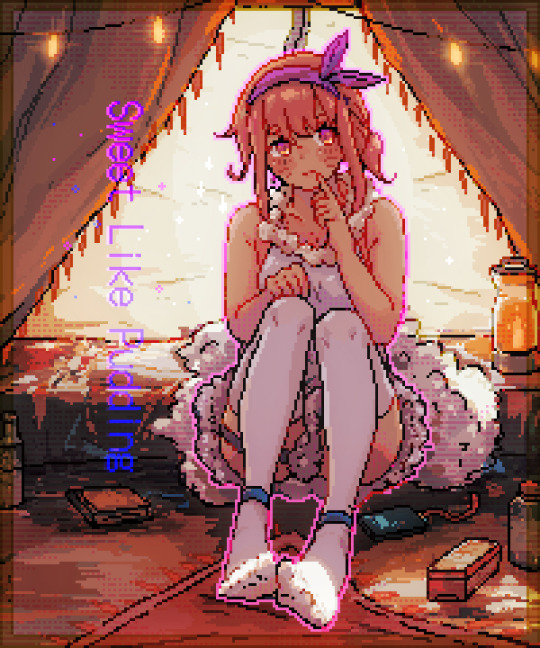
Pudding!
This was inspired by @fishing-lesbian-catgirl's lovely story, Sweet Like Pudding!
#Only after finishing did I realize she actually has a winter outfit so...#The story also features Closure#This story got me back into reading actually#What are you still doing here? Go give it a read and some kudos!#digital art#pixel#pixel art#artists on tumblr#arknights#pudding
1K notes
·
View notes
Text

Fop redesigns for funsies but also bcs I saw some star heel boots and had to put Dale in them immediately.
#No Dev in this lineup simply bcs I cannot imagine him wearing anything but his cannon outfit#he has no sense of fashion or personal identity to pull an outfit from LOL#fop#fairly oddparents#fop a new wish#fairly oddparents a new wish#hazel wells#dale dimmadome#fop peri#fop cosmo#fop wanda#redesigns#outfit redesign#art#digital art#fanart#Im not gonna be using Dale or Peris redesigns bcs those arent things I see them wearing regularly they were more just fun explorations#Hazel Cosmo and Wanda im def using tho#I know I didnt change Wanda much but#I have a small but insane pet peeve where I cannot stand a characters pants and shirt being the same color.#So I made Hazels sweater more purple and changed her pants to a different and darker blue#Gave cosmo a more relaxed dad vibe while keeping it a button up#Wandas mostly the same I just mostly used her human outfit and changed her sneakers to boots#Peri has less visible fairy features than his parents because hes more insistent about hiding them#Also if Peri looks uncomfortable in his outfit it is because he is ♥#I wrote like an entire paragraph about Peris relationship with gender identity and how fairy society biology/gender binary comes in conflic#and then I pussied out of posting it so now all you get is peri looking kinda uncomfy in a skirt#The long story short of it tho is that Peri identifies as the human version of male#while the closest he can get to that in fairy society is kind of transfem#So dressing like that around other fairies is closer to making him feel himself but still not entirely right
574 notes
·
View notes
Text


I’d give so much to hear their banters between Awakening and their merging
#my art#dragon age#i tried looking for fics but there’s actually not that many that feature Justice in Kristoff’s body#and I’m not fond of the official Anders short story#also I’m sorry that everything I post lately is so doodly#I need to relearn how to do proper finished pieces haha
940 notes
·
View notes
Text

chair + helmet for funsies
#xmen#xmen comics#xmen tas#xmen 92#krakoa#charles xavier#professor x#snap sketches#need to practice drawing this helmets 3/4ths angle hi#gotta make this post quick cause i told my bro we'd carve pumpkins before i left for the week#BUUUUTTTT ANYWAY yeah while i was browsing my comic shop the first time i ran across this story and thought it was cute#it was the tas/92 adaption of krakoa but i only skimmed it#i thought of picking it up at some point but as for now it lives as a memory in my brain. i do wanna look at it closer tho#tbh at some point i think i wanna try to do a design for charles that features his actual krakoa design but with a chair/hover chair#i think itd be fun cause ngl i always like drawing his chair and not getting to with krakoa stuff makes me sad#if i get to that i dont think it'll be like. a staple with my krakoa art but just somethin to do for fun#ok i think thats all for now. i think im gonna do a movie charles doodle page later cause I Am Once Again Working Out His Face#so fingers crossed ith that plan !!!! for now its pumpkin time BYE
479 notes
·
View notes